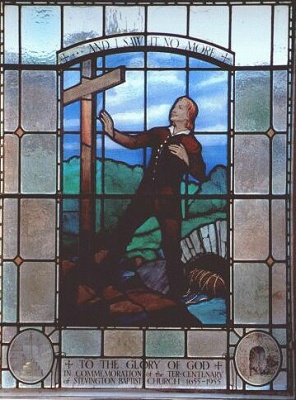Brief
History of the Village
Stevington
is an ancient "Domesday" village. It has a rich
history. The Village, situated between the Roman highways
of Ermine Street and Watling Street, was nevertheless off the
beaten track and we have no evidence that a legionary ever set
foot here.
With
the Germanic invasions of the ninth Century, Stevington became
part of the kingdom of the Middle Angles. In pre-Conquest England
it was under the rule of the powerful kingdom of Mercia which
dominated the Midlands until the advance of the Kingdom of Wessex
under Alfred the Great and his immediate descendants. |
| The
Danish invasions of the ninth century led to the occupation of
much of northeastern England north of the Great Ouse. Stevington
was a frontier town on the edge of the Danelaw and remained such
until Aethelred recovered Bedford from the
Danes in 915. The Anglo-Saxon tower of the church probably dates
from a time soon after the reconquest. The
great Domesday survey of 1086 recorded Stevingon (Stiuentone)
as one of the richest parishes in the County. It had the potential
for 24 ploughs compared with only seven and a half in nearby
Carlton, and a preConquest value of £30 which no other
village of its acreage in the County approached.
In
the early Middle Ages the Lordship of Stevingon was held from
the time of the Conquest by the Counts of Boulogne, important
tenants in chief of the Norman kings. Later, it passed to the
aristocratic families of de Quency, Wake, Holland and Stanley
and, finally, to the influential local family of the Alstons.
The Lordship ceased to have legal effect in 1926. |
|
 |
Window
Stevington Baptist Meeting.
Photograph by Roger Day |
|